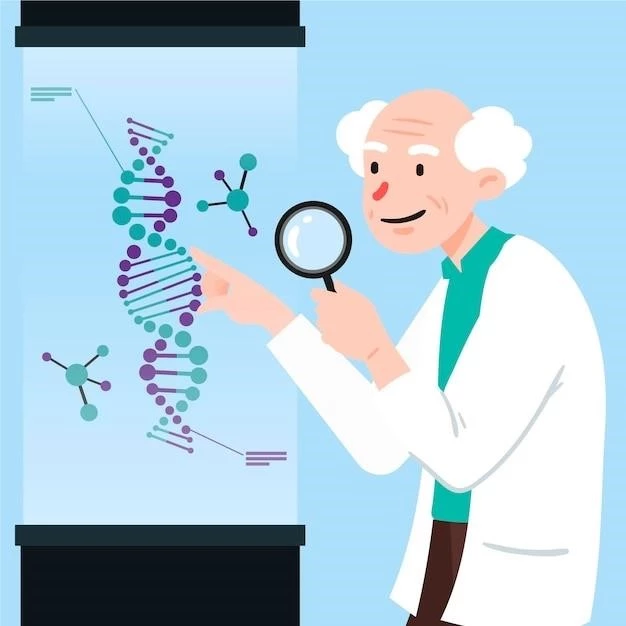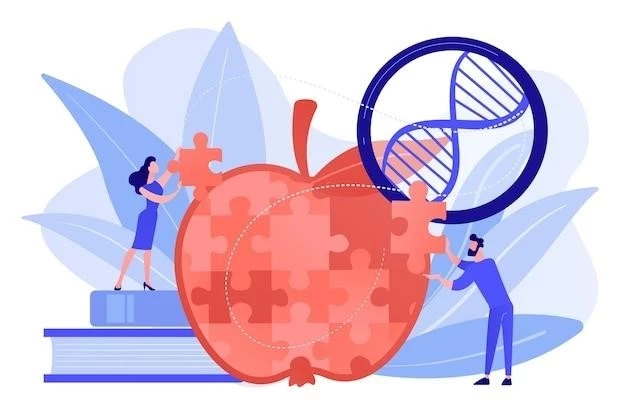Disease ─ Iridogoniodysgenesis‚ dominant type
Iridogoniodysgenesis‚ dominant type is a rare genetic condition impacting the iris and leading to glaucoma. This article will delve into its genetic basis‚ symptoms‚ diagnosis‚ treatments‚ links to other disorders‚ and ongoing research in this field;
Overview of Iridogoniodysgenesis‚ dominant type
Iridogoniodysgenesis‚ dominant type is a rare genetic eye disorder characterized by mutations in certain genes that affect the development of the iris and drainage angle of the eye. This condition typically manifests in childhood and can lead to glaucoma‚ a serious eye condition that can result in vision loss if left untreated.
Individuals with iridogoniodysgenesis‚ dominant type may present with symptoms such as light sensitivity‚ cloudy cornea‚ increased intraocular pressure‚ and blurred vision. Diagnosis is often made through a comprehensive eye exam‚ including assessing the structure of the iris and measuring intraocular pressure.
Treatment options for iridogoniodysgenesis‚ dominant type focus on managing glaucoma symptoms and may include medications‚ laser therapy‚ or surgery to improve drainage in the eye. It is essential for individuals with this condition to undergo regular eye screenings to monitor any changes in their vision and intraocular pressure.
Understanding the relationship between iridogoniodysgenesis‚ dominant type and other syndromes or disorders is crucial for providing comprehensive care to affected individuals. Ongoing research in this field aims to further elucidate the genetic mechanisms underlying this condition and develop more targeted treatment approaches to improve the vision outcomes for patients with iridogoniodysgenesis‚ dominant type.
Genetic Basis of Iridogoniodysgenesis
Iridogoniodysgenesis‚ dominant type is predominantly inherited in an autosomal dominant pattern‚ meaning that a mutation in just one copy of the responsible gene in each cell is sufficient to cause the disorder. The condition is linked to mutations in various genes involved in eye development‚ particularly those affecting the formation of the iris and drainage structures in the eye.
One of the key genes associated with iridogoniodysgenesis‚ dominant type is FOXC1‚ which plays a critical role in the early development of the eye. Mutations in the FOXC1 gene can disrupt the normal processes of iris formation and drainage angle development‚ leading to the characteristic features of the disorder.
Genetic testing and counseling are essential for individuals with a family history of iridogoniodysgenesis‚ dominant type‚ as identification of the specific genetic mutation can help guide treatment decisions and inform family members about their risk of inheriting the condition. Understanding the genetic basis of this disorder is crucial for developing targeted therapies that address the underlying molecular mechanisms involved in iris and eye structure abnormalities.

Research efforts are ongoing to further elucidate the complex genetic factors contributing to iridogoniodysgenesis‚ dominant type and to explore potential gene therapies or gene editing techniques that could offer novel treatment strategies for individuals affected by this rare genetic eye disorder.
Symptoms and Diagnosis
Individuals with iridogoniodysgenesis‚ dominant type may experience a range of symptoms related to abnormalities in the development of the iris and drainage structures in the eye. Common symptoms include light sensitivity‚ blurred vision‚ cloudy cornea‚ and increased intraocular pressure. Children with this condition may also exhibit signs of early-onset glaucoma‚ such as excessive tearing or discomfort.
Diagnosing iridogoniodysgenesis‚ dominant type typically involves a comprehensive eye examination by an ophthalmologist. The healthcare provider will assess the structure of the iris‚ measure intraocular pressure‚ and evaluate the drainage angle of the eye to look for any abnormalities indicative of the condition. Additionally‚ imaging tests such as ultrasound or optical coherence tomography may be used to further evaluate the structures of the eye.
Genetic testing may also be recommended for individuals suspected of having iridogoniodysgenesis‚ dominant type‚ especially if there is a family history of the disorder. Identifying the specific genetic mutation responsible for the condition can help confirm the diagnosis and guide treatment decisions. Early detection and diagnosis of iridogoniodysgenesis‚ dominant type are essential for initiating appropriate management strategies to preserve vision and prevent complications associated with glaucoma.
Regular eye screenings and monitoring of intraocular pressure are crucial for individuals with this condition to track any progression of glaucoma and ensure timely intervention. Collaborating with a multidisciplinary team of eye care professionals can help optimize the management of iridogoniodysgenesis‚ dominant type and minimize the impact of visual impairment on affected individuals.
Treatment Options
Treatment for iridogoniodysgenesis‚ dominant type focuses on managing symptoms associated with the disorder‚ such as glaucoma‚ to preserve vision and prevent further complications. The approach to treatment may involve a combination of medications‚ laser therapy‚ and surgical interventions tailored to the individual needs of the patient.
Medications‚ such as eye drops or oral medications‚ may be prescribed to help lower intraocular pressure and reduce the risk of optic nerve damage caused by glaucoma; These medications work by either reducing the production of aqueous humor (fluid inside the eye) or improving its drainage.
Laser therapy‚ known as trabeculoplasty‚ can be used to increase the outflow of fluid from the eye and lower intraocular pressure. This procedure is often performed in a clinic setting and can help reduce the dependence on glaucoma medications in some cases.
In cases where medications and laser therapy are not effective in controlling intraocular pressure‚ surgical interventions such as trabeculectomy or drainage device implantation may be considered; These procedures aim to create alternative pathways for fluid drainage from the eye‚ thereby reducing pressure and preserving vision.
Regular follow-up appointments with an ophthalmologist are crucial for monitoring the effectiveness of treatment and adjusting the management plan as needed. Individuals with iridogoniodysgenesis‚ dominant type should adhere to their prescribed treatment regimen and attend scheduled eye exams to prevent vision loss and maintain optimal eye health.
Relationship with Syndromes and Disorders
Iridogoniodysgenesis‚ dominant type may be associated with other syndromes and genetic disorders that affect various systems in the body. One such condition is Axenfeld-Rieger syndrome‚ which shares similarities with iridogoniodysgenesis and can present with developmental abnormalities of the eye‚ teeth‚ and facial structures.
Individuals diagnosed with iridogoniodysgenesis‚ dominant type should undergo a thorough evaluation to assess for any additional signs or symptoms of related syndromes or disorders that may impact their overall health. Genetic testing and consultation with specialists in medical genetics may be recommended to explore potential systemic implications of the primary eye disorder.
Understanding the relationship between iridogoniodysgenesis‚ dominant type and associated syndromes is essential for providing comprehensive care to affected individuals and addressing any potential multi-system involvement. Collaborating with a multidisciplinary team of healthcare professionals can help manage the complex needs of individuals with these coexisting conditions and improve their overall quality of life.
Ongoing research into the genetic underpinnings of iridogoniodysgenesis‚ dominant type and its potential connections to other syndromes or disorders is crucial for expanding our knowledge of how these conditions intersect and developing more personalized treatment strategies that consider the broader health implications for affected individuals.
Research and Future Directions
Ongoing research into iridogoniodysgenesis‚ dominant type aims to deepen our understanding of the underlying genetic mechanisms driving this rare eye disorder. Scientists are exploring the intricate interactions between genes involved in iris development and drainage angle formation to elucidate how mutations lead to the characteristic features of the condition.
One area of interest in research is the development of more targeted treatment approaches for individuals with iridogoniodysgenesis‚ dominant type. This includes investigating gene therapies that could potentially correct the genetic abnormalities responsible for the disorder‚ offering a novel way to address the root cause of the condition and improve long-term outcomes for patients.
Advancements in genetic testing technologies have also paved the way for more precise diagnostics and personalized treatment strategies for individuals with iridogoniodysgenesis‚ dominant type. Researchers are leveraging these tools to identify unique genetic signatures associated with the disorder and tailor interventions to the specific genetic makeup of each patient.
Future directions in research may involve exploring the potential links between iridogoniodysgenesis‚ dominant type and other genetic disorders or syndromes that share overlapping features. By uncovering these connections‚ researchers can gain insights into the broader implications of genetic mutations on ocular health and systemic well-being.
Collaborative efforts between clinicians‚ scientists‚ and genetic experts are key to advancing research in the field of iridogoniodysgenesis‚ dominant type and translating scientific discoveries into innovative therapeutic solutions that offer hope for individuals affected by this complex genetic eye disorder.
